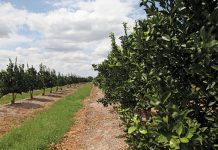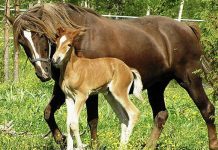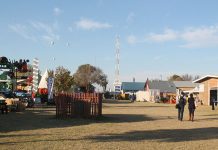Teaching a horse to lift a foot
Your horse should lift all four feet willingly when asked, writes Dr Mac.
Laminitis: too much rich food can cause lameness
Laminitis often has devastating consequences for your horse's ability to work. If it's too severe, your horse may even have to be put down, writes Dr Mac.
Feng Shui for horses
Feng Shui is the ancient Chinese art of positioning the things around us so that we are in greater harmony with our environment.
Danger signs that need expert attention
Even though many South Africans live in remote areas and it is difficult to get a vet, in some situations there is no alternative.
Stress in endurance rides
Competitive long-distanc e riding tests the stamina of both horse and rider.
Aromatherapy for horses
Aromatherapy is the use of essential oils to improve the emotional, and in turn the physical wellness of the animal being treated.
Computer-assisted breeding
In part one (Farmer's Weekly, 25 May 2007), Art McDonald told us the secret of an “ideal horse” was the balance of its proportions. In the second article, based on an interview published in American Horse and Rider 30 years ago, Diane C Simmons found out how McDonald used a computer program he developed to improve his breeding.
When horses bolt their feed
It is not uncommon to find a horse that bolt s its feed. This means that it eats so fast that it hardly chews or breathes.
Resistance problems?
Various factors can contribute to resistance in your horse - the bit is not necessarily always the problem.
Issue date 15 June 2007
Foal food for thought
The best time to start feeding a foal is two months before weaning. Once a foal has been weaned it is up to you to provide it with a good diet. Issue date 8 June 2007
Facial paralysis
Facial paralysis is a fairly common ailment in horses. The paralysis of the facial nerve can be slight or very dramatic. If treated immediately it normally can be reversed





